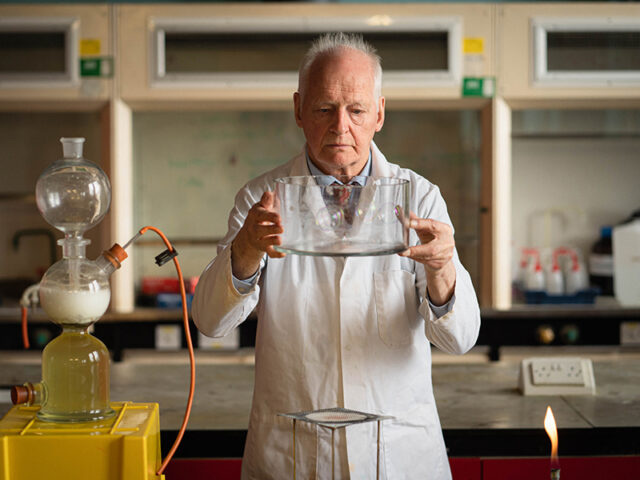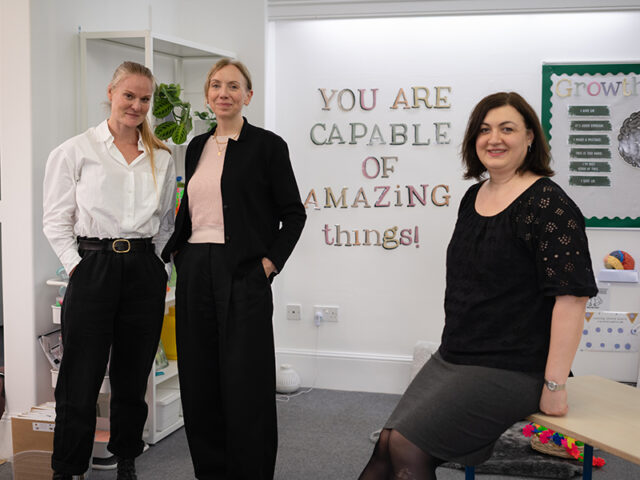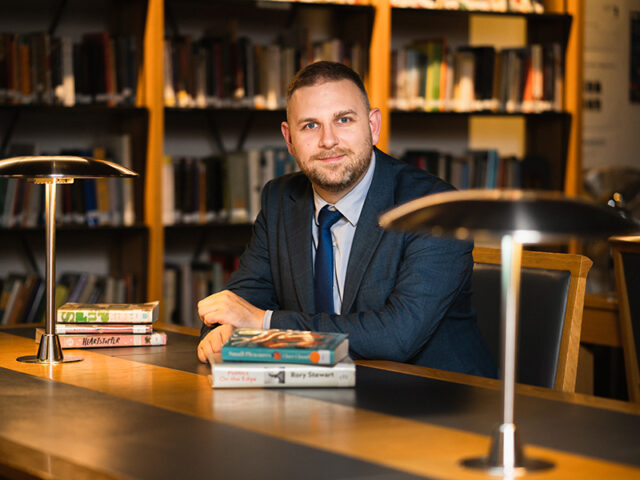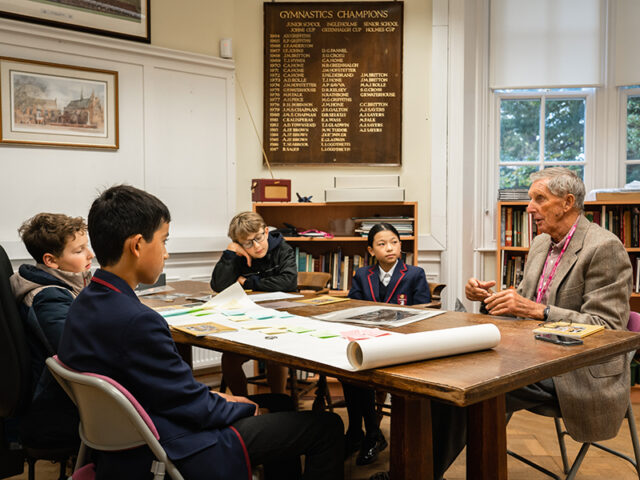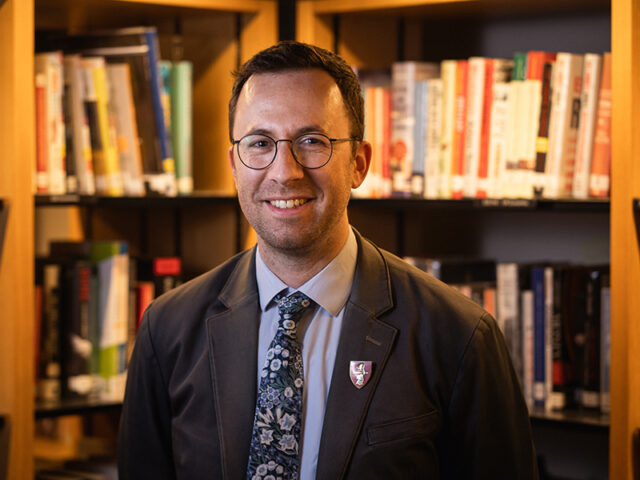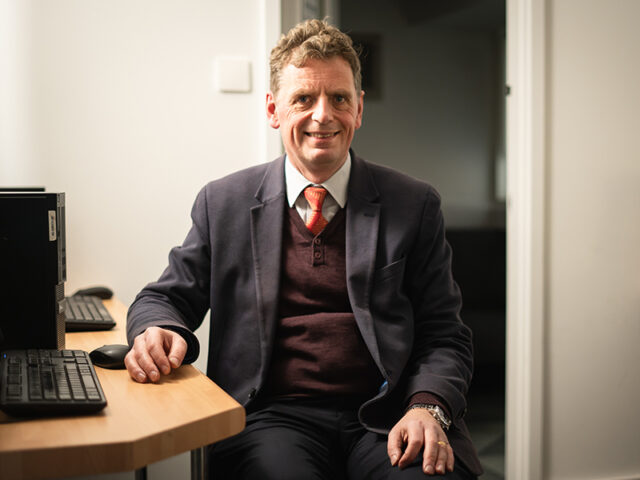Charlotte Kaye graduated from Highgate in 2007 and following a career teaching art she started her own business, The Garden Sewing School in Hampstead. A passionate advocate of sustainable clothing, Charlotte was invited to do a talk by the Senior School’s Environment Committee for their Fast Fashion-Free February initiative.
This home-grown campaign raises awareness about the detrimental impacts of fast fashion, encouraging us all to reconsider our shopping habits and opt for ethical fashion choices instead. As the ‘Big 4’ autumn fashion weeks draw to a close, we recap on Charlotte’s conversation with the pupils, and celebrate the benefits of a more sustainable and self-sufficient lifestyle.
You have a creative background but when you were setting up your business did you have to learn lots of new skills?
When I was at Highgate I did Art, History, History of Art and English A levels. I didn’t do anything numbers related so it’s been a huge learning curve for me to understand how to balance the books. I have friends who helped me with marketing and accounting, and I’ve learnt things I never would have thought I could do. I had so many assumptions about what I was capable of doing before starting this and just went for it and realised that you will just do it. I haven’t encountered anything yet that’s outside of my capabilities but I’m sure I will at some point.
What extent do you think sustainability features in the reasons for people making their own clothes and any other personal motivations you have?
I got into sewing for selfish reasons because I wanted to wear clothes that fitted me well. The majority of people who come to my school want to make things for other people, for their children, grandchildren, family members, they have very selfless reasons for wanting to get into it. I got a big influx of people at the beginning of December because they thought that they needed to make handmade presents for Christmas and it wasn’t an option any more to just buy cheap things. People are very conscious now on not relying on shop bought items as there’s more awareness of where things are coming from.
How do you feel the industry has been changing and especially since the Covid pandemic, are people more interested in sewing?
I started sewing in 2015/16 and it was considered as one of those things like churning your own butter, very niche, not many people did it and was quite twee. A lot of the sewing patterns were not very modern and not something you’d want to wear if you were a teenager. It started picking up just before the pandemic but because more people had more time at home to sew, or they started making face masks, it just exploded. Also, the sewing machine company I work with have said they have a backlog of orders on sewing machines, so in a way we’re back to the 1920s where every home had a sewing machine in the same way they had a washing machine.
I think it’s something generally more people are interested in, even if they don’t start making their clothes from scratch, everyone knows that clothes only fit a very specific body type because they use specific body blocks in the fashion industry. So if you’re under 5ft 6, you’re going to need to shorten your trousers!
With your creative process, do you find yourself envisaging something then finding pictures to fit that, or do you find yourself inspired by the patterns you have?
I definitely started with patterns but a couple of students I teach don’t want to use patterns at all, they just want to draft their own. But I find it much easier to follow a pattern like a puzzle piece and only in the last year or so, six or seven years into sewing, I’ve put a pattern ban on myself and said, OK everything I make I want to try and draft it because I think that will make me a better sewist, and it’s been really good for my teaching as I know how to draft things.
How much planning would you say goes into each garment?
It’s always different, so at the moment I’m working on something that has a lot of structure in it and I also want to make it colour blocked. I find myself drawing sketches of it and colouring it in different combinations. And I plan stuff like that quite a lot but then more casual things like the clothes I make for my son are just lots of fabrics stuck together, I just make it up as I go along. Every garment takes between 4 and 14 hours to make I would say. Sometimes I like to slow it down and sometimes I’m just really anxious to make something right away.
To what extent do you need to be able to draw and sketch what you want to make?
You don’t need to be able to draw to be good at sewing or to be good at visualising. I teach a few students who can draw and some that can’t. My students will explain to me what they want a garment to look like by pointing to the body parts and I draw it for them. Or I use a croquis which is a fashion illustration, so I have a blank frame of a body and they draw over the top which helps them quite a lot. I wouldn’t say that being good at art means that you’ll automatically be a good sewist, and I think that anyone can sew even if they don’t consider themselves particularly creative.
Do you dye any fabrics yourself?
Yes, I’ve been experimenting with natural dyes and for about four months I collected every avocado skin that I ate because it turns a really nice shade of pink! My Mum is a landscape designer and she made the garden where the sewing studio is and she’s been planting the types of plants you need to be able to make natural dyes from. So I’m at the start of my natural dye journey but hopefully there’ll be lots more to come.
